PPT-Intro to Nonfiction What is nonfiction writing?
Author : pasty-toler | Published Date : 2018-10-21
Nonfiction Prose writing Presents and explains ideas or tells about real people Examples Essays Newspaper and magazine articles Journals Travelogues Biographies
Presentation Embed Code
Download Presentation
Download Presentation The PPT/PDF document "Intro to Nonfiction What is nonfiction w..." is the property of its rightful owner. Permission is granted to download and print the materials on this website for personal, non-commercial use only, and to display it on your personal computer provided you do not modify the materials and that you retain all copyright notices contained in the materials. By downloading content from our website, you accept the terms of this agreement.
Intro to Nonfiction What is nonfiction writing?: Transcript
Download Rules Of Document
"Intro to Nonfiction What is nonfiction writing?"The content belongs to its owner. You may download and print it for personal use, without modification, and keep all copyright notices. By downloading, you agree to these terms.
Related Documents

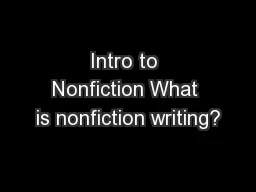
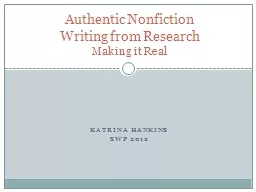

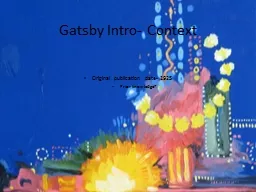
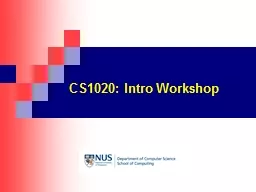
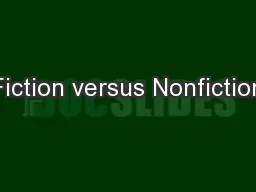
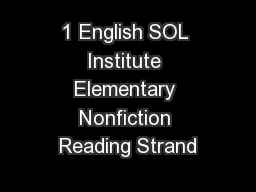

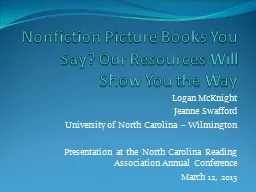
![[READ] - Notice & Note / Reading Nonfiction Signpost Student Bookmarks: 30-Pack](https://thumbs.docslides.com/900980/read-notice-note-reading-nonfiction-signpost-student-bookmarks-30-pack.jpg)
![[DOWNLOAD] - Nonfiction Sight Word Readers Parent Pack Level A: Teaches 25 key Sight](https://thumbs.docslides.com/901287/download-nonfiction-sight-word-readers-parent-pack-level-a-teaches-25-key-sight-words-to-help-your-child-soar-as-a-reader.jpg)
![[EBOOK] - 5 Kinds of Nonfiction: Enriching Reading and Writing Instruction with Children\'s](https://thumbs.docslides.com/901384/ebook-5-kinds-of-nonfiction-enriching-reading-and-writing-instruction-with-children-s-books.jpg)
![[DOWNLOAD] - Reading Nonfiction: Notice & Note Stances, Signposts, and Strategies](https://thumbs.docslides.com/901478/download-reading-nonfiction-notice-note-stances-signposts-and-strategies.jpg)
![[EPUB] - 25 Easy Bilingual Nonfiction Mini-Books: Easy-to-Read Reproducible Mini-Books](https://thumbs.docslides.com/901563/epub-25-easy-bilingual-nonfiction-mini-books-easy-to-read-reproducible-mini-books-in-english-and-spanish-that-build-vocabulary.jpg)